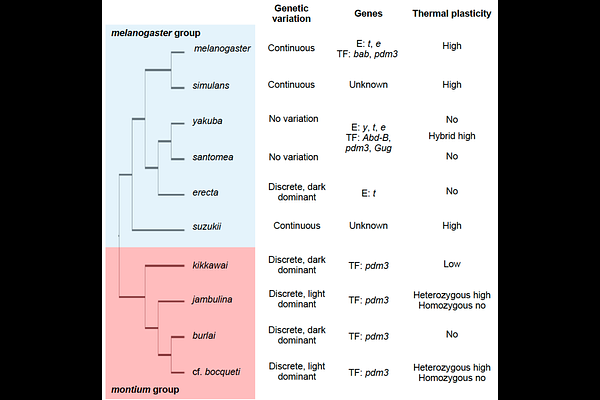Phenotypic plasticity as a function of genetic polymorphism: thermal dominance reversal in Drosophila species with contrasting melanism

Phenotypic plasticity as a function of genetic polymorphism: thermal dominance reversal in Drosophila species with contrasting melanism
David, J. R.; Denis, B.; Francelle, P.; Lemaire, A.; Das, A.; Mohanty, S.; Gibert, P.; Yassin, A.
AbstractPhenotypic plasticity is often seen as an alternative adaptive strategy to genetic polymorphism, especially in response to rapid environmental changes. Indeed, a link between plasticity and heterozygosity, i.e. the basic measure of polymorphism, has previously been dismissed. Here, we investigate the thermal plasticity of abdominal pigmentation in eight Drosophila species, four belonging to the melanogaster species group and four to the montium group. Despite a conserved developmental pathway for melanin synthesis, the genetic architecture of its variation has significantly evolved, being polygenic in most species (like D. melanogaster) and Mendelian or invariable in others. By investigating the thermal plasticity of this trait in species with distinct architectures, we show the degree of plasticity to strongly associate with heterozygosity. Plasticity was resurrected in hybrids between species with no plastic responses but with contrasting melanism, and was higher in heterozygotes in species with simple Mendelian polymorphism. In plastic cases, pigmentation dominance is reversed depending on the developmental temperature. We propose simple genetic models with empirical molecular support to explain this link between phenotypic plasticity and genetic polymorphism. The relationship between these two phenomena, and the impact of each on the evolution of the other, may be more relevant than it is currently appreciated.